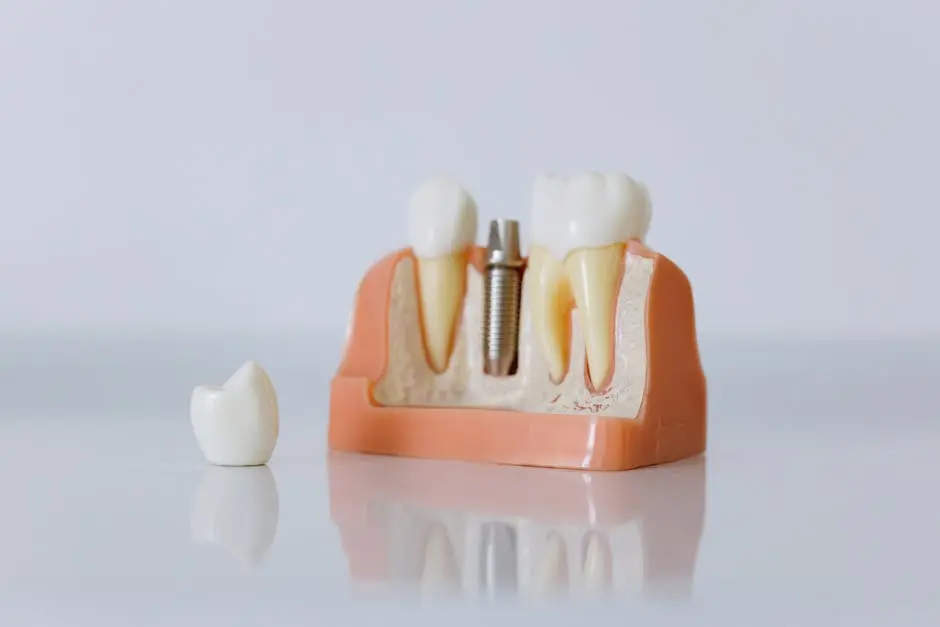Dental implants are a remarkable solution for individuals looking to replace missing teeth. They not only restore functionality but also enhance the aesthetic appeal of one’s smile. In this blog, we’ll break down the process of how dental implants work, making it easy for you to understand each step involved.
Understanding Dental Implants
Dental implants are artificial tooth roots that provide a permanent base for fixed or removable replacement teeth.
They are designed to look, feel, and function like natural teeth, allowing patients to regain full functionality in their mouths. Patients appreciate that dental implants can significantly improve their quality of life by enhancing how they eat and speak.
Essentially, a dental implant acts as a foundation for a crown, bridge, or denture, providing a stable and durable support system. This versatility is one reason why more and more individuals are choosing implants over traditional dentures.
The Components of Dental Implants
Each implant typically consists of three parts: the implant itself, the abutment, and the crown.
The implant is a small titanium post that is surgically inserted into the jawbone. Titanium is selected because it is biocompatible, meaning your body accepts it well, facilitating the bonding process during healing.
Next, the abutment is placed on the implant. It acts as a connector between the implant and the crown, which is the visible part of the tooth. The crown is custom-designed to blend with your existing teeth, ensuring a natural appearance.
Understanding these components is critical because they work together seamlessly to restore your smile and function. Proper placement and selection of each part are key elements that contribute to the result of the dental implant.
The Dental Implant Procedure
The process begins with a consultation, followed by the placement of the implant, healing time, and attachment of the crown.
During the consultation, your dentist will assess your dental health and review your medical history. Imaging tests may be conducted to evaluate bone density and structure, determining the suitability for an implant.
Once approved, the surgical procedure involves local anesthesia and possibly sedation to ensure comfort. The dentist will create an incision in your gum tissue to access the jawbone, where the implant will be inserted.
After the surgery, it’s essential to allow ample time for healing. This healing phase, known as osseointegration, can take several months, during which the implant bonds with the jawbone. Patience is important here, as this step is crucial for the success of your implant.
Healing and Integration
After placement, the implant needs time to fuse with your jawbone in a process known as osseointegration.
During this healing period, it’s important to follow your dentist’s post-operative instructions carefully. This includes managing any discomfort with prescribed medications and avoiding hard or crunchy foods that could disrupt the process.
Successful osseointegration is critical for the long-term stability of the implant. Once fully healed, your dentist will check the fusion before attaching the abutment and crown, ensuring everything fits perfectly.
After this phase, you’ll not only have a functional tooth but also a restored sense of confidence, knowing your smile looks as good as it feels!
Caring for Your Dental Implants
Maintaining good oral hygiene and regular dental check-ups are crucial for the longevity of your implants.
Just like natural teeth, dental implants require meticulous care. Brushing and flossing daily helps prevent gum disease, which is essential for the health of both implants and natural teeth.
Additionally, scheduling regular dental visits will allow your dentist to monitor the condition of your implants and overall oral health. Professional cleanings, along with a personalized care plan, will extend the lifespan of your implants.
Incorporating the right habits will ensure that you enjoy the rewards of your dental implants for years to come, maintaining not only a beautiful smile but also optimal dental health.
Final Thoughts on Dental Implants
In summary, dental implants provide a durable and natural-looking option for tooth replacement. By understanding the process and steps involved, you can make informed decisions regarding your dental health. If you’re considering dental implants, consult with your dentist to explore your options!















